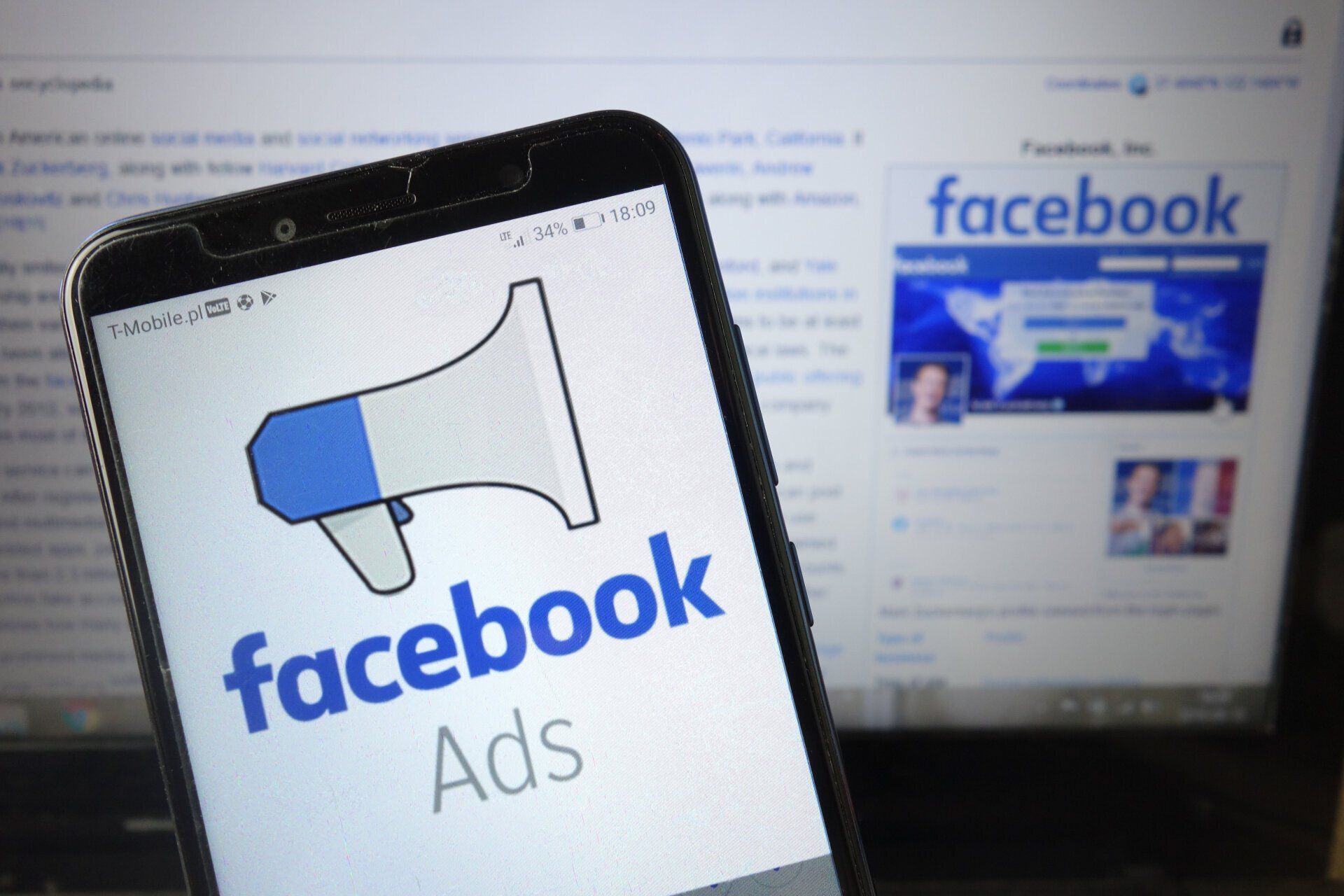Maximizing Your Business with Effective PPC Advertising
Effective PPC Advertising
Introduction:
In the dynamic landscape of online advertising, PPC (Pay-Per-Click) advertising can be a game-changer for your home services business. However, without proper management, it can drain your budget and impede growth. This blog offers a step-by-step guide to help you navigate the intricacies of PPC advertising and achieve exceptional results.
Step 1: Setting the Right Budget
Avoid one of the most common pitfalls in PPC advertising by establishing a clear and realistic budget. Align your budget with marketing goals and financial constraints. Striking a balance between investment and control is crucial for optimizing PPC campaigns.
Define Your Advertising Goals:
Before delving into budgeting, clarify your advertising goals. Whether it's increasing website traffic, generating leads, or driving sales, a well-defined objective forms the basis for determining the appropriate PPC budget to achieve those goals.
Understand Your Industry and Competition:
Industry dynamics and competition play a crucial role in shaping your PPC budget. Research the average cost-per-click (CPC) in your industry and analyze competitors' PPC strategies. This understanding provides context for setting a realistic budget that positions you competitively.
Calculate Customer Acquisition Costs (CAC):
The cost of acquiring a customer is a key metric to inform your PPC budget. Calculate your Customer Acquisition Costs, considering factors such as ad spend, conversion rates, and average customer lifetime value. This calculation ensures that your budget aligns with the financial realities of customer acquisition.
Determine Your Maximum Cost-Per-Click (Max CPC):
Establish a Maximum Cost-Per-Click (Max CPC) for your PPC campaigns. This is the highest amount you're willing to pay for a click on your ad. Consider factors such as keyword competitiveness, ad position goals, and the value each click brings to your business.
Allocate Budget Across Campaigns and Channels:
If running multiple campaigns or across different advertising channels (e.g., Google Ads, social media), allocate your budget strategically. Assign higher budgets to high-priority campaigns that align with your primary goals. This ensures that resources are optimized for maximum impact.
Consider Seasonal Variations:
Account for seasonal fluctuations in demand and competition. Adjust your PPC budget accordingly to capitalize on peak periods and conserve resources during slower seasons. This flexibility ensures that your advertising efforts align with the dynamic nature of your industry.
Implement Budget Monitoring and Adjustments:
PPC budgeting is not a set-it-and-forget-it process. Regularly monitor campaign performance against budget allocations. Identify high-performing and underperforming campaigns, adjusting budgets to optimize for results. This iterative approach ensures that your budget aligns with the evolving effectiveness of your campaigns.
Utilize Budgeting Tools and Analytics:
Leverage budgeting tools provided by PPC platforms and integrate analytics into your strategy. Platforms like Google Ads offer features to help you set and manage budgets effectively. Analytics tools provide insights into the performance of your campaigns, enabling informed budget adjustments.
Step 2: Keyword Targeting Precision
Keywords are the backbone of PPC advertising. Conduct in-depth research to identify high-converting keywords relevant to your plumbing business and service area. Target specific keywords with strong user intent to attract more qualified clicks and conversions.
Understanding Keyword Relevance:
Relevance is the linchpin of successful keyword targeting. Each keyword selected should align closely with the products or services you offer. A deep understanding of your audience's search intent allows you to curate a list of keywords that resonate with their needs and preferences.
Conduct Comprehensive Keyword Research:
Begin with thorough keyword research to identify the terms and phrases your potential customers are using in their search queries. Utilize keyword research tools, competitor analysis, and customer feedback to build a robust list that spans a spectrum of relevant terms.
Prioritize High-Intent Keywords:
Not all keywords are created equal. Prioritize high-intent keywords that indicate a strong likelihood of conversion. Long-tail keywords, specific product names, or terms suggesting immediate action are often associated with users closer to the point of making a decision.
Leverage Negative Keywords Strategically:
Negative keywords are a powerful tool to refine your targeting. Identify irrelevant or non-converting terms and add them as negative keywords to prevent your ads from showing for those queries. This ensures that your budget is allocated to the most relevant searches.
Implement Match Types for Precision:
Match types control how closely the search query must match your chosen keyword for your ad to appear. Utilize match types (broad match, phrase match, exact match) strategically. While broad match casts a wider net, exact match narrows the focus to highly specific searches.
Group Keywords into Themes:
Organize your keywords into tightly themed ad groups. Grouping related keywords allows you to create highly relevant ad copy and landing pages. This cohesion enhances the user experience, increases ad relevance, and positively impacts Quality Score.
Regularly Refine and Expand Keyword Lists:
PPC campaigns are dynamic, and user search behaviors evolve. Regularly revisit and refine your keyword list based on performance data, emerging trends, and shifts in customer behavior. Simultaneously, explore opportunities to expand your keyword repertoire to capture new audiences.
Utilize Keyword Match Reports:
Leverage keyword match reports provided by PPC platforms. These reports offer insights into which keywords trigger your ads and how they perform. Analyzing this data allows you to fine-tune your keyword strategy, adjusting bids, and refining your targeting for optimal results.
Step 3: Crafting Compelling Ad Copy
The success of your PPC campaigns hinges on the quality of your ad copy. Craft compelling headlines and descriptions that resonate with your target audience. Highlight unique selling points and communicate a clear call to action (CTA) to encourage users to click.
Start with a Clear Value Proposition:
The essence of compelling ad copy lies in a clear and irresistible value proposition. Clearly communicate what sets your plumbing services apart. Highlight unique selling points, special offers, or benefits that resonate with your target audience.
Understand Your Audience's Pain Points:
To craft compelling ad copy, delve into the pain points and challenges your audience faces. Speak directly to their needs and showcase how your plumbing services provide solutions. Addressing specific pain points creates an immediate connection with your audience.
Utilize Persuasive Language and Urgency:
Infuse your ad copy with persuasive language that evokes emotion and prompts action. Incorporate words that convey a sense of urgency, encouraging users to take immediate steps. Phrases like "Limited Time Offer" or "Act Now" instill a sense of urgency that can drive conversions.
Highlight Unique Selling Propositions (USPs):
What makes your plumbing services stand out? Whether it's unmatched expertise, 24/7 availability, or competitive pricing, highlight your Unique Selling Propositions (USPs) in your ad copy. Clearly communicate why users should choose your services over competitors.
Tailor Ad Copy to Match User Intent:
Align your ad copy with the user's intent. If users are searching for emergency plumbing services, your ad copy should address the urgency and availability of immediate assistance. Tailoring your message to match user intent enhances relevance and engagement.
Include Compelling Calls to Action (CTAs):
The call to action (CTA) is the compass guiding users toward the desired action. Craft compelling CTAs that clearly indicate what users should do next. Whether it's "Call Now," "Request a Quote," or "Schedule Service," the CTA should be enticing and straightforward.
Experiment with Ad Extensions:
Ad extensions offer additional real estate to showcase relevant information. Experiment with various ad extensions, such as site link extensions, callout extensions, or structured snippet extensions. These extensions provide opportunities to add extra details and entice users further.
A/B Test Ad Variations:
A/B testing is a powerful tool for refining your ad copy. Test variations of headlines, descriptions, and CTAs to identify what resonates best with your audience. Continuous testing and optimization ensure that your ad copy evolves in line with changing user preferences.
Step 4: Landing Page Optimization
Ensure your ads lead to optimized landing pages that provide a seamless transition from the ad's message. Tailor landing pages to keywords and ad content, ensuring quick loading and providing visitors with the information needed to take action.
Align Landing Pages with Ad Messaging:
The first rule of effective landing page optimization is alignment. Ensure that the content and messaging on your landing pages align seamlessly with the promises made in your PPC ads. Consistency builds trust and reinforces the user's decision to engage with your plumbing services.
Create a Clear and Compelling Headline:
The headline is the gateway to your landing page. Craft a clear and compelling headline that resonates with the user's search intent. It should reaffirm the relevance of your services and create immediate engagement. Use concise language that communicates value.
Optimize for Readability and Scannability:
Users should be able to grasp the essence of your landing page quickly. Optimize for readability by using clear fonts, concise sentences, and scannable content. Break down information into digestible sections with headers and bullet points for easy navigation.
Highlight Key Benefits and USPs:
Your landing page is an opportunity to showcase the key benefits and Unique Selling Propositions (USPs) of your plumbing services. Clearly outline how your services address user needs and why choosing your business is the best decision. Highlight USPs prominently.
Incorporate Trust-Building Elements:
Building trust is pivotal for conversion. Incorporate trust-building elements such as customer testimonials, industry certifications, or guarantees. These elements instill confidence in users, mitigating any concerns they may have about choosing your plumbing services.
Craft Compelling Calls to Action (CTAs):
The call to action (CTA) on your landing page should seamlessly continue the journey initiated by your PPC ad. Craft compelling CTAs that guide users toward the desired action. Whether it's "Request a Quote," "Book Now," or "Learn More," the CTA should be prominent and persuasive.
Optimize for Mobile Responsiveness:
With a significant portion of users accessing websites on mobile devices, optimizing for mobile responsiveness is non-negotiable. Ensure that your landing pages provide a seamless experience across various devices, enhancing accessibility and user satisfaction.
Implement A/B Testing for Continuous Improvement:
Landing page optimization is an iterative process. Implement A/B testing to experiment with different elements such as headlines, imagery, CTAs, and overall layouts. Analyze performance data to identify what resonates best with your audience and refine accordingly.
Step 5: Monitor and Adjust
PPC advertising is not a set-and-forget strategy. Regularly monitor campaign performance, analyzing key metrics like click-through rate (CTR), conversion rate, and return on ad spend (ROAS). Identify underperforming campaigns or keywords to make timely adjustments for better results.
Vigilant Monitoring for Performance Insights:
Vigilance is the cornerstone of effective PPC management. Regularly monitor the performance of your campaigns to gain valuable insights. Analyze key metrics such as click-through rates (CTR), conversion rates, and Cost Per Click (CPC) to understand how your ads are resonating with your audience.
Utilize PPC Analytics Tools:
Leverage the power of PPC analytics tools provided by platforms like Google Ads. These tools offer detailed insights into campaign performance, audience behavior, and keyword effectiveness. Utilize these analytics to identify areas for improvement and strategic adjustments.
Evaluate Ad Copy and Keyword Performance:
Ad copy and keywords are the lifeblood of your PPC campaigns. Assess the performance of different ad variations and keywords. Identify high-performing elements and replicate strategies that resonate with your audience. Simultaneously, pinpoint underperforming aspects for refinement or removal.
Monitor Quality Scores:
Quality Score is a vital metric that impacts your ad rank and cost-effectiveness. Regularly monitor Quality Scores for your keywords. A high Quality Score indicates that your ads are relevant to users, potentially lowering your CPC and improving ad placement. Adjust your strategy based on Quality Score insights.
Assess Conversion Data:
The ultimate goal of PPC advertising is conversion. Assess conversion data to understand which campaigns, ad groups, and keywords are driving meaningful actions. Optimize your budget allocation based on the conversion performance of different elements within your campaigns.
Adjust Bids Strategically:
Bid adjustments play a crucial role in optimizing your PPC campaigns. Analyze the performance of different demographics, devices, and locations. Adjust bids strategically to allocate more budget to high-performing segments and limit spending on underperforming areas.
Respond to Seasonal and Industry Trends:
PPC advertising exists within the broader context of seasonal and industry trends. Stay attuned to shifts in user behavior, industry dynamics, and seasonal variations. Adjust your campaigns accordingly to capitalize on opportunities and navigate challenges effectively.
Implement A/B Testing for Continuous Refinement:
A/B testing is an ongoing process for refining and optimizing your PPC strategy. Experiment with different ad copy, visuals, and landing page elements. Use A/B testing to uncover what resonates best with your audience and adjust your campaigns based on the continuous feedback loop.
Step 6: Embrace A/B Testing
A/B testing is a potent tool in your PPC arsenal. Experiment with different ad variations to identify what resonates best with your audience. Continuously test elements such as headlines, descriptions, and images to discover the combinations that yield the best results.
Understanding the Essence of A/B Testing:
A/B testing, also known as split testing, involves comparing two versions (A and B) of an element within your PPC campaign to determine which performs better. This iterative process allows you to refine various components, such as ad copy, visuals, and landing pages, based on real-time user responses.
Experiment with Different Ad Copy Variations:
Ad copy is the voice of your PPC campaign. Conduct A/B tests with different ad variations to discern which resonates most effectively with your audience. Experiment with different headlines, descriptions, and calls to action to identify the winning formula that drives engagement and conversions.
Optimize Visual Elements and Imagery:
Visual appeal is a powerful factor in capturing attention. A/B test different visuals and imagery within your ads to discover which elements enhance user engagement. This may include testing diverse images, graphics, or even the overall layout to determine the most compelling visual presentation.
Fine-Tune Landing Page Components:
The journey from a click to conversion often involves a landing page. A/B test different elements on your landing pages, including headlines, content, forms, and calls to action. Determine the layout and content arrangement that leads to higher conversion rates and a more seamless user experience.
Experiment with Ad Placement and Formats:
The placement and format of your ads can significantly impact performance. A/B test different ad placements on various platforms and experiment with formats such as text ads, display ads, or responsive ads. Discover the combination that garners the highest visibility and engagement.
Test Keyword Match Types and Bid Strategies:
A/B testing isn't limited to creative elements; it extends to the foundational aspects of your campaigns. Experiment with different keyword match types and bid strategies. Assess the impact of broad match, phrase match, and exact match keywords on your ad performance.
Evaluate Call-to-Action (CTA) Effectiveness:
Calls to action are the catalysts for user interaction. A/B test different CTAs to determine which prompts users to take the desired actions. Whether it's "Get Started," "Request a Quote," or "Sign Up Today," find the CTA that aligns best with your audience's preferences.
Iterate Based on Data and Insights:
The essence of A/B testing lies in data-driven insights. Regularly analyze the results of your tests and iterate based on the findings. Whether you're refining ad copy, adjusting bid strategies, or optimizing landing pages, the continuous cycle of testing and refinement is key to ongoing success.
Conclusion:
Mismanaged PPC advertising can drain your budget and hinder your marketing efforts. It's time to take action and optimize your PPC strategy for the best results. If you have questions or need guidance on optimizing your PPC advertising, reach out. I'm here to help you achieve exceptional results in your plumbing business. Here's to more effective PPC advertising and a boost in your company's success!










